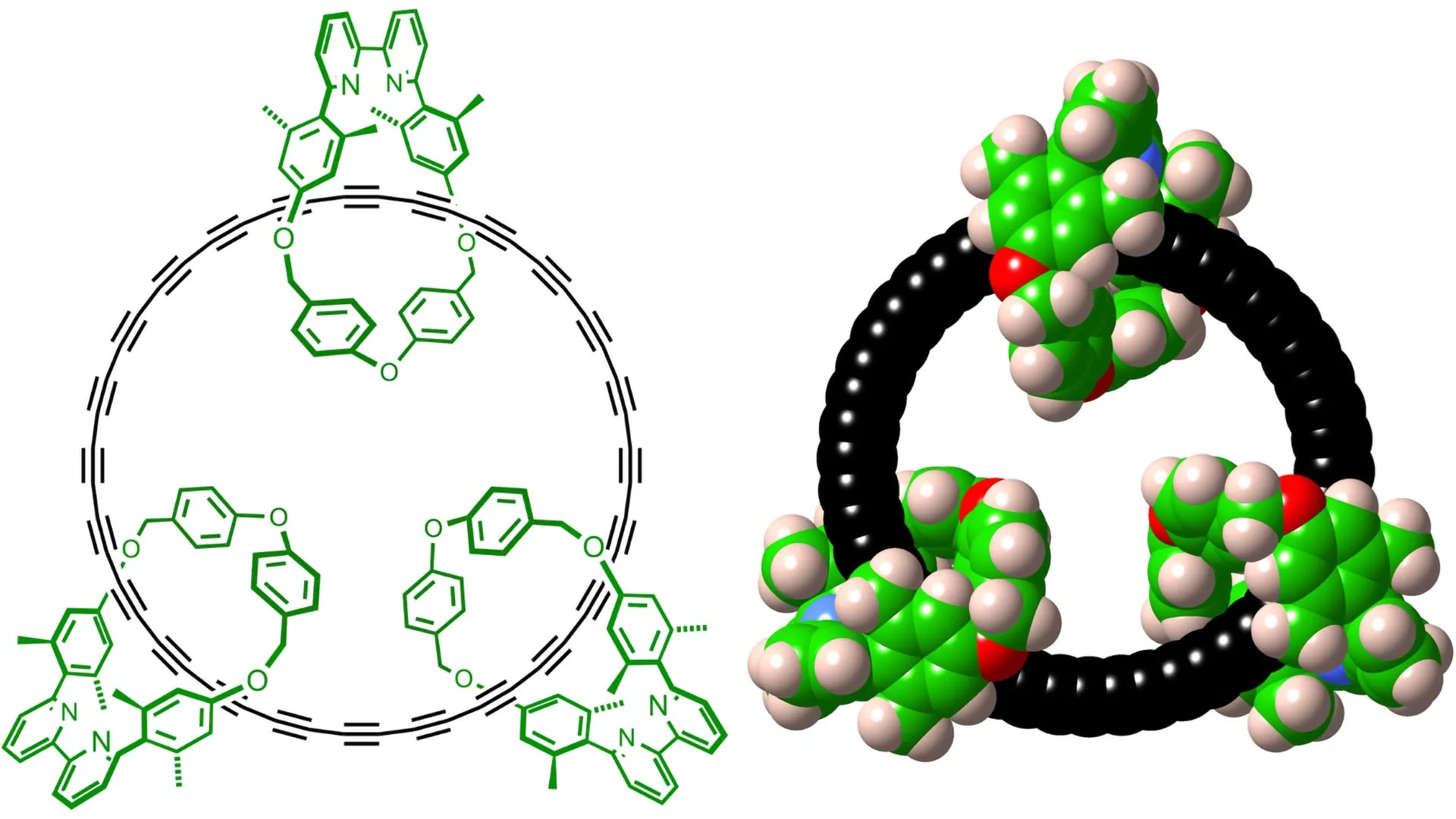Scientists finally tame the impossible 48-atom carbon ring
- Date:
- August 17, 2025
- Source:
- University of Oxford
- Summary:
- Researchers have synthesized a stable cyclo[48]carbon, a unique 48-carbon ring that can be studied in solution at room temperature, a feat never achieved before.
- Share:

In a new study led by Oxford University's Department of Chemistry, chemists have demonstrated the synthesis of a cyclocarbon that is stable enough for spectroscopic characterisation in solution at room temperature.
In a new study led by Oxford University's Department of Chemistry, chemists have demonstrated the synthesis of a cyclocarbon that is stable enough for spectroscopic characterisation in solution at room temperature.
The synthesis of a new type of molecular carbon allotrope that can be studied under normal laboratory conditions is a rare achievement. The only previous example was the synthesis of fullerenes by Krätschmer et al. in 1990 (Nature 1990).
In the new study, the molecule cyclo[48]carbon was synthesised as a [4]catenane, i.e. with the C48 ring threaded through three other macrocycles. These threaded macrocycles increase the stability of C48 by preventing access to the protected cyclocarbon.
Previously, molecular rings consisting purely of carbon atoms have only been studied in the gas phase or at very low temperatures (4 to 10 K). Now, the team have synthesised a cyclocarbon that is stable in solution at 20°C (half-life 92 hours). This has been achieved by using threaded macrocycles, choosing a large cyclocarbon with a low level of strain, and developing mild reaction conditions for the unmasking step in the reaction (where a precursor molecule is transformed into the final product).
The cyclocarbon catenane was characterised by mass spectrometry, NMR, UV-visible and Raman spectroscopy. The observation of a single intense 13C NMR resonance for all 48 sp1 carbon atoms indicates that all of the carbons are in equivalent environments, which provides strong evidence for the cyclocarbon catenane structure.
Lead author Dr Yueze Gao (Department of Chemistry, University of Oxford) said: "Achieving stable cyclocarbons in a vial at ambient conditions is a fundamental step. This will make it easier to study their reactivity and properties under normal laboratory conditions."
Study senior author Professor Harry Andersen (Department of Chemistry, University of Oxford) said: "This achievement marks the culmination of a long endeavour to synthesise cyclocarbon catenanes, based on the hope that they might be stable enough to study at room temperature. The original grant proposal was written in 2016, based on preliminary results from 2012-2015. It is satisfying to have reached this point, because there were many times when the goal seemed unrealistic and unachievable. This work would not have been possible without the outstanding facilities for NMR spectroscopy in the Department of Chemistry at Oxford."
The study also involved researchers from the University of Manchester, the University of Bristol and the Central Laser Facility, Rutherford Appleton Laboratory.
Story Source:
Materials provided by University of Oxford. Note: Content may be edited for style and length.
Journal Reference:
- Yueze Gao, Prakhar Gupta, Igor Rončević, Coral Mycroft, Paul J. Gates, Anthony W. Parker, Harry L. Anderson. Solution-phase stabilization of a cyclocarbon by catenane formation. Science, 2025; 389 (6761): 708 DOI: 10.1126/science.ady6054
Cite This Page: